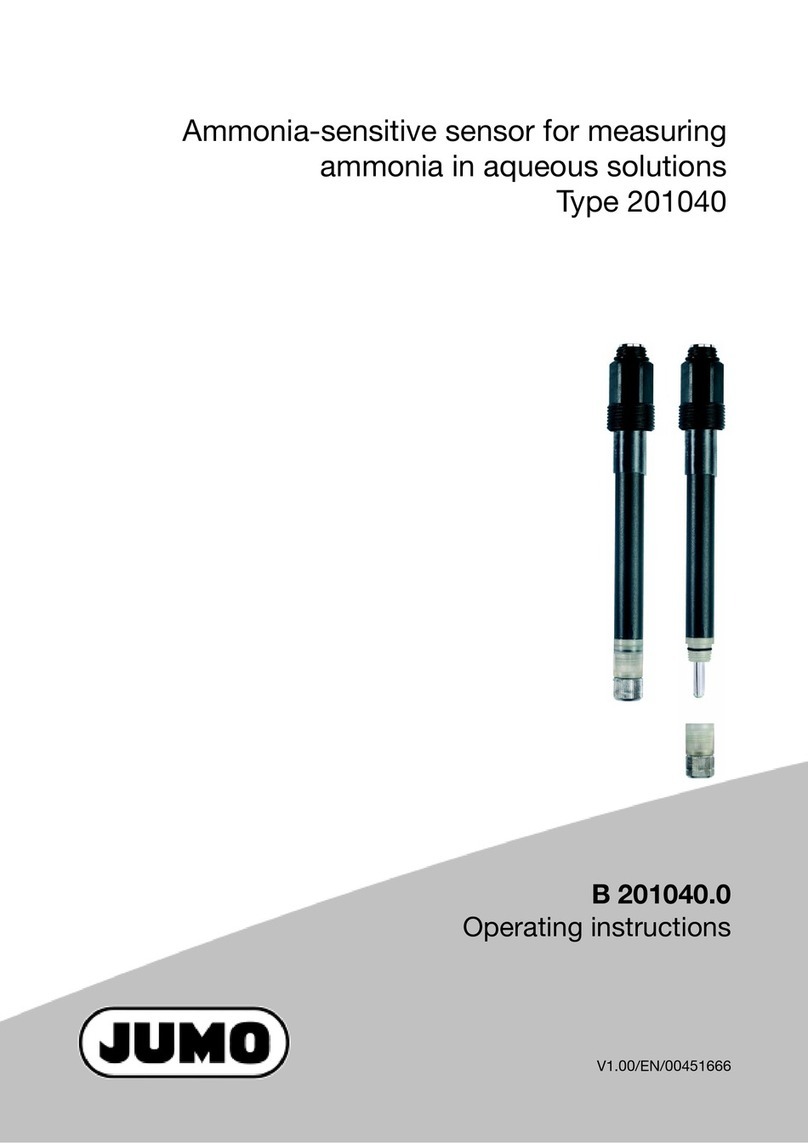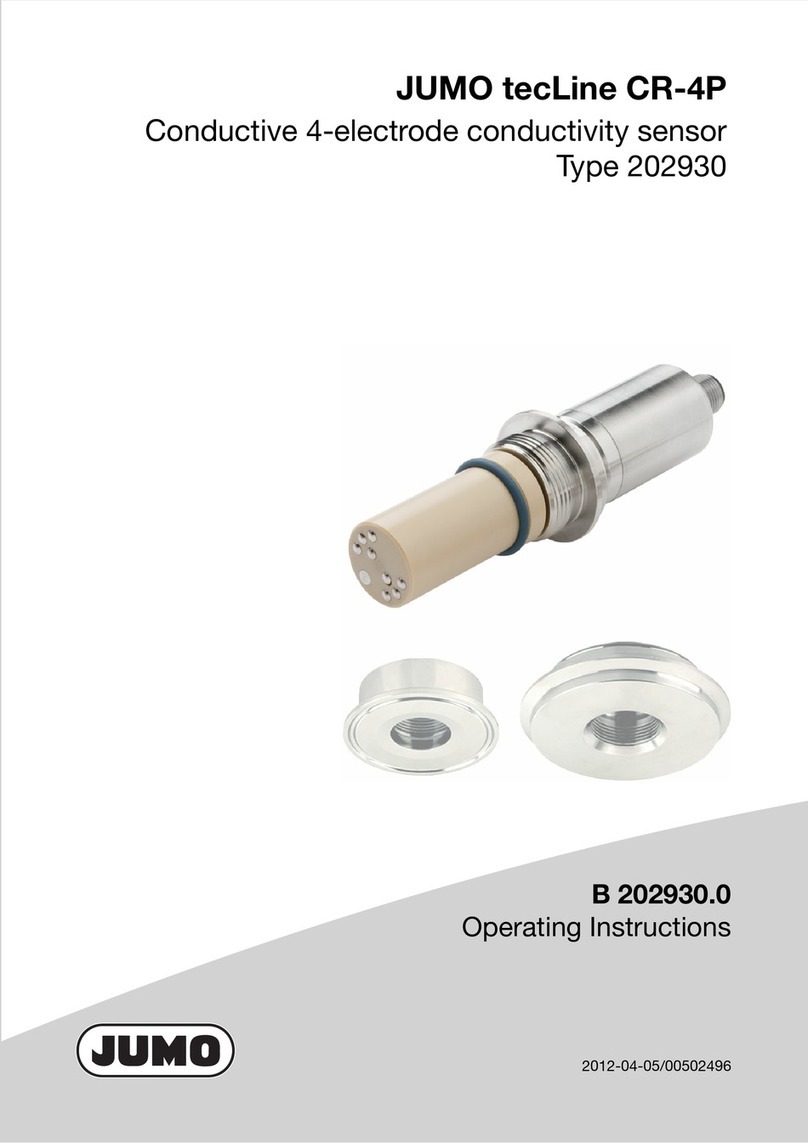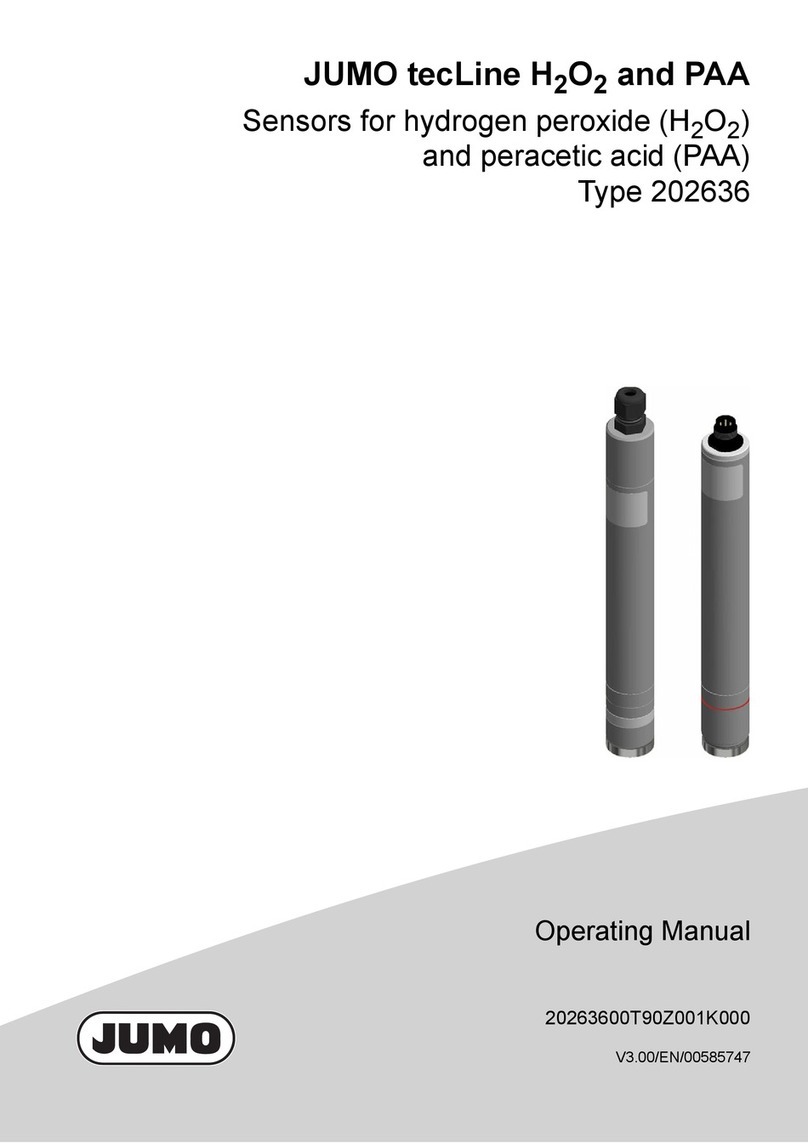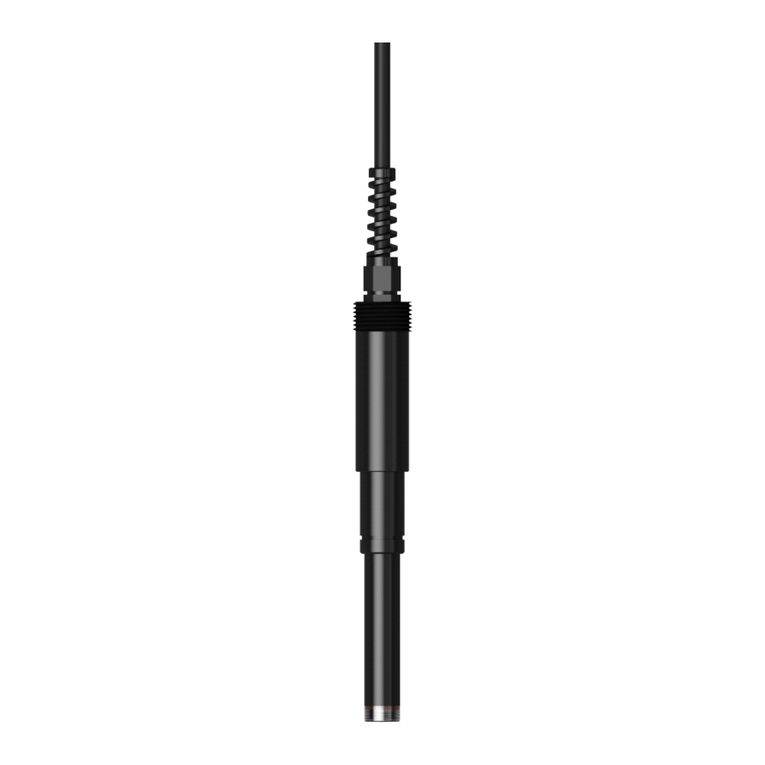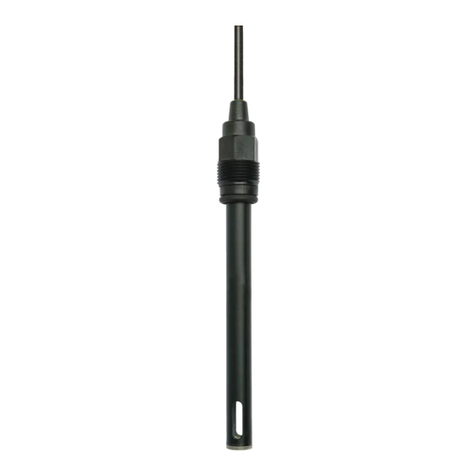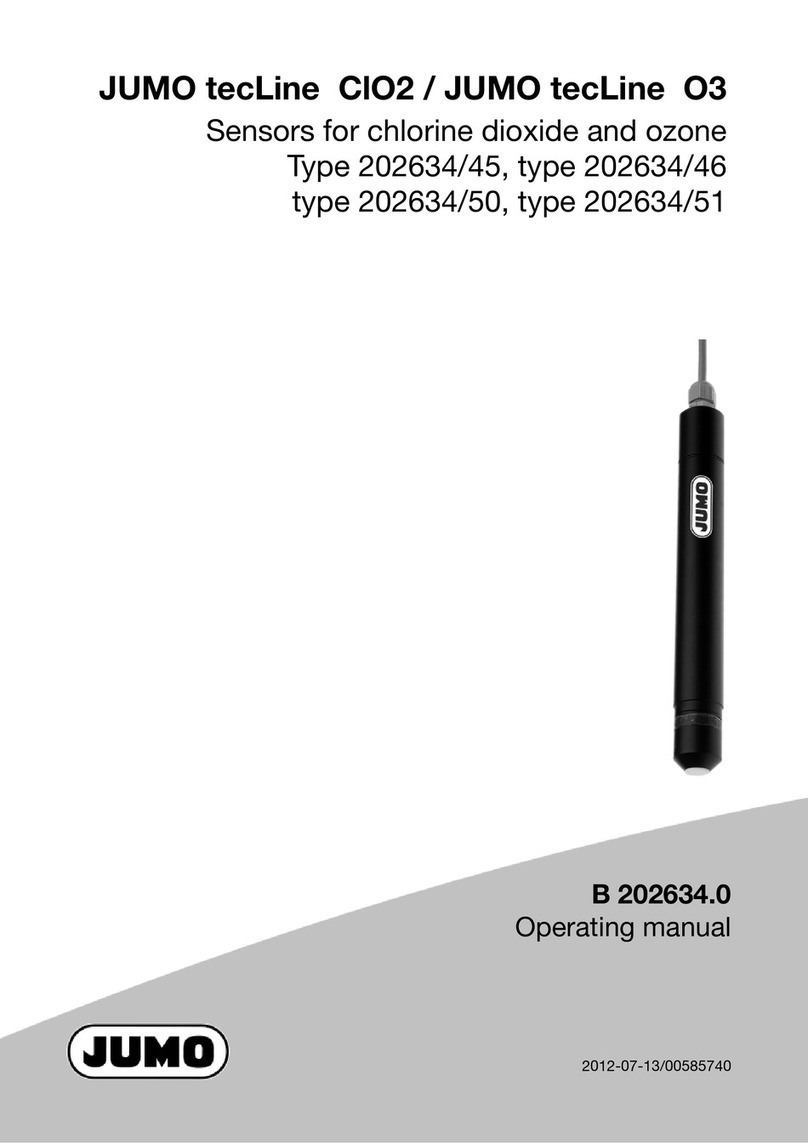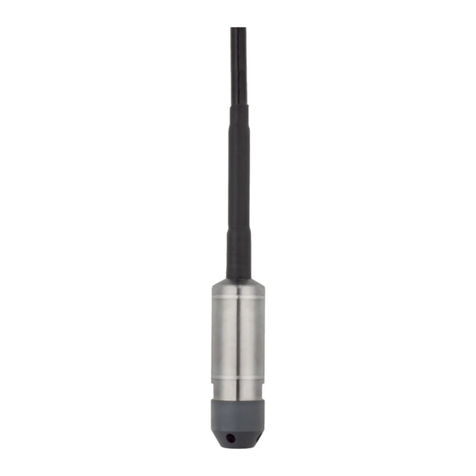
7
2 General information
2 General information
2.1 Object of these instructions and purpose of application
The standard DIN EN 1434, as well as PTB Directive K7.2, describe the requirements for cold meters
and combined cold/heat meters und their sub-components. When combining sub-components (flow sen-
sor, pair of temperature probes, computer unit) to form a heat meter, the standard prescribes platinum
RTD temperature probes according to the standard DIN EN 60751:2009 / IEC 60751:2008 because
these probes have sufficient measurement stability, accuracy, and interchangeability.
These days, the latest cold meters use various nominal values on the computer unit side (resistance val-
ue at 0 °C). The nominal values are normally 100 Ω (Pt100), 500 Ω (Pt500), and 1000 Ω (Pt1000).
The RTD temperature probes in the type series 902454/10 and 902454/11 for direct mounting, and
902464/10 for installation in thermowells have national type approval for cold meters. When it comes to
use on combined cold/heat meters, these temperature probes also have an EC type examination in ac-
cordance with EC Directive 2014/32/EU (MID) including Appendices I and MI-004. The paired tempera-
ture probes are suitable for being connected to a computer unit of a combined cold/heat meter and
measure the difference between the forward flow and reverse flow temperature of a heat exchanger sys-
tem.
The temperature probes are made up of a corrosion-resistant protection fitting.
In order to meet the metrological requirements of PTB Directive K7.2 and EC Directive 2014/32/EU
(MID) and Annex MI-004, the temperature probes are calibrated at three temperatures and paired ac-
cording to a special mathematical process in order to comply with the tolerance for the temperature dif-
ference. The lower limit for the temperature difference is 3 K.
2.2 Identification marking
Each temperature probe pair is equipped with a nameplate containing the following information:
• CE identification marking with ID codes for the notified bodies appointed to certify module D (produc-
tion quality assurance)
• Metrology identification marking, including the two digits for the year in which the identification mark-
ing was created
• Logo for the owner of the type examination certificate
• Type examination certificate number
• Pair number/ID
• Manufacturing date (year/calendar week)
• Manufacturing location (in-house code)
• Type number
• Admissible measuring range (temperature, temperature difference)
• Maximum pressure stage
• Nominal value
• Manufacturer's address
The inflow and outflow probes are distinguished by colored identification markings on the temperature
probe's cable (red: inflow, blue: outflow) or using an identification marking on the nameplate (V = inflow,
R = outflow).
